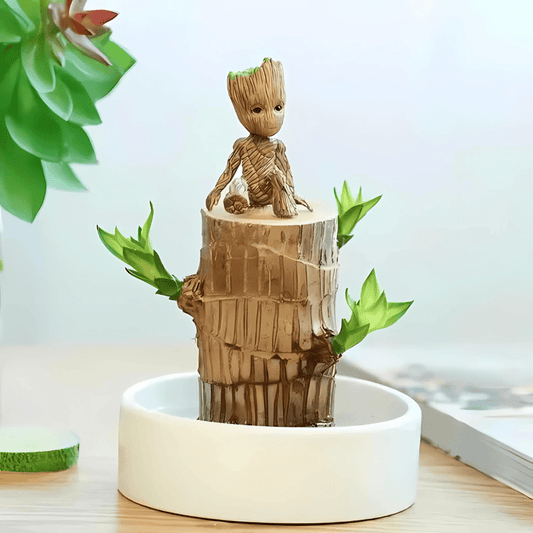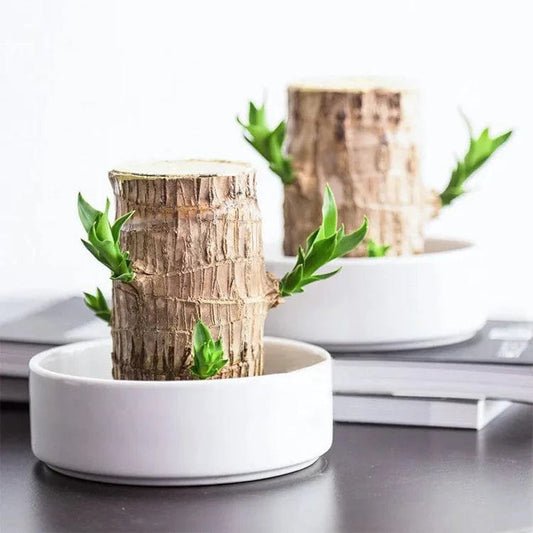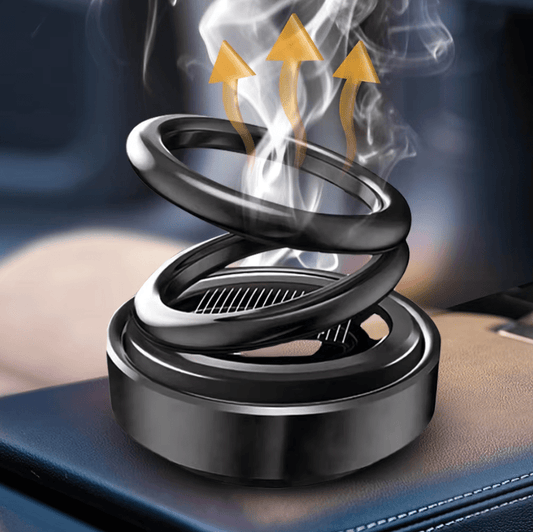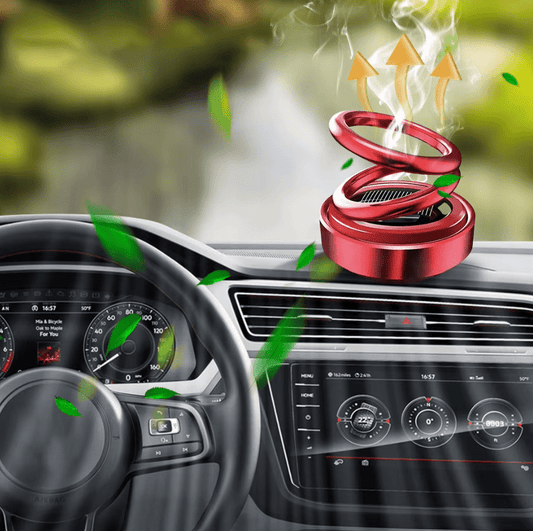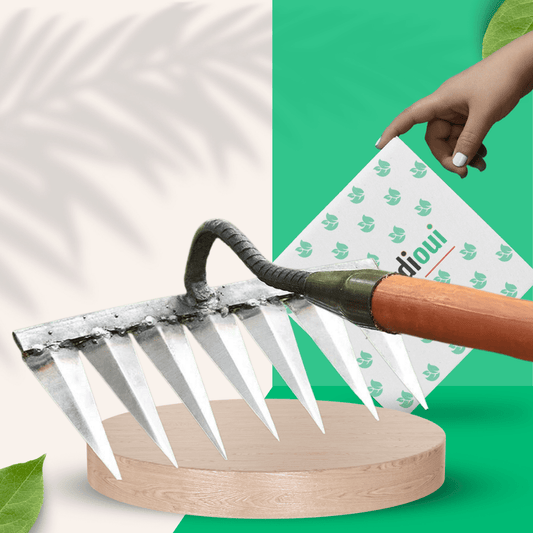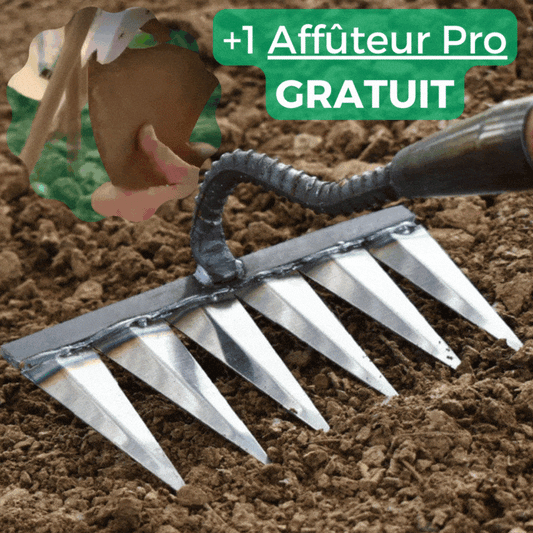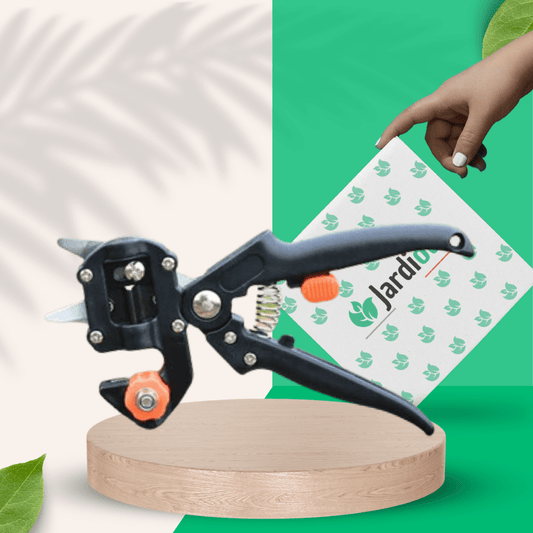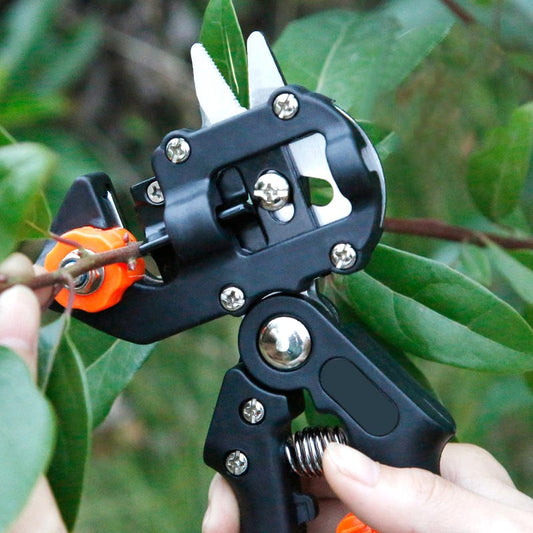How to Take Care of Your Gardening Tools?
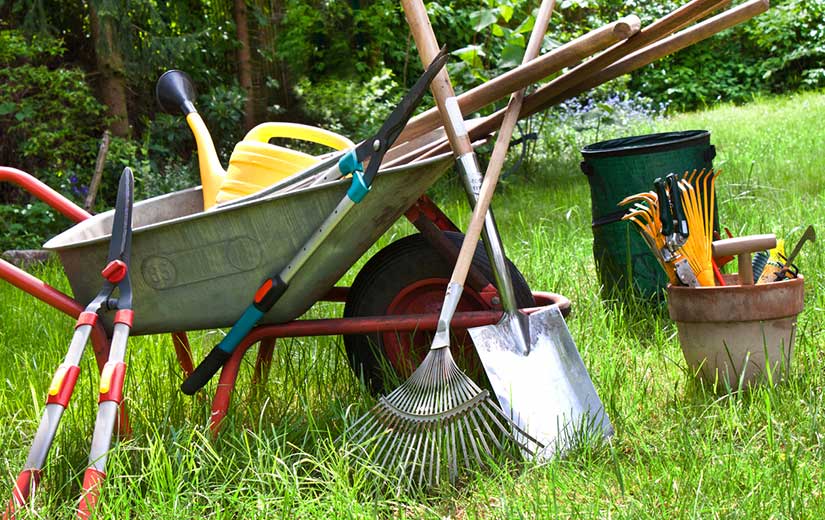
A regular maintenance routine keeps your garden tools in good working order and helps them last longer. Tools must not only be sharp, but also clean and sterile.
Tools exposed to plants or soil infested with bacteria, fungi or insects can spread these problems throughout the garden.
It only takes a few minutes after each gardening session to care for your tools and protect your garden for the next use.
DAILY MAINTENANCE 🌱
Keeping your tools clean and storing them properly after each use is essential to making them last.
Here are some general tips:
- Rinse digging tools with a garden hose and use a wire brush or putty knife to remove caked-on soil.
- Give pruners, loppers or shears a quick brush with a nail brush and soapy water.
- If tools have been exposed to diseased plants or pest-infested soil, quickly soak them in a diluted solution of 2 cups household bleach mixed with 1 gallon of water, then rinse them with water. clean water or wipe them with a cotton pad dipped in rubbing alcohol.
- Always dry your tools thoroughly with a towel or cloth.
- Keep a bucket of sand mixed with a vegetable oil, such as boiled linseed oil, on hand for metal digging tools. The sand should be damp, but not wet. Dip the blade, teeth or claws in the sand several times for quick cleaning or do this after regular maintenance once the tools are dry. The oil helps protect the metal surface from rust and corrosion.
- Avoid using petroleum products, such as motor oil, because the next time you use the tool you will introduce petroleum into your soil.
- Keep disinfectant wipes on hand to remove sap, bacteria and fungus for quick field cleanup.
- Store tools in a dry, well-ventilated shed or garage. Small hand tools can be stored in a bucket of sand or small rocks, and larger tools should be hung or stored upside down to avoid dulling their blades.

MAINTENANCE WITH BOILLED FLAX OIL 🌿
Boiled linseed oil can be used to condition wooden handles and protect metal parts of tools. When applied to metal parts, it creates a barrier between the metal and oxygen, preventing rust.
For a complete treatment, apply it generously to the entire tool, let it sit for 15 minutes and wipe off the excess with a dry cloth.
Read and follow instructions carefully, as used rags may present a combustion hazard if improperly stored or disposed of.
ELIMINATE THE SAP 🌳
Pruner blades clogged with sap can be difficult to use. Solvents, such as mineral spirits or turpentine, can be used to remove sap from pruning tool blades.
- Wipe the blades with a cotton ball or cloth soaked in solvent.
- Clean the blades with soapy water and treat them with linseed oil after using the solvents.
PREVENT AND REMOVE RUST 🛠️
Make sure tools are thoroughly dried before storing them and treat them with linseed oil or mineral oil to prevent rusting. But, if you discover rust on your tools, here is what you can do to get them back into working order:
- Soak them in a mixture of vinegar and water (1:1) overnight.
- Rub in circular motions with steel wool.
- Rinse with soapy water, then with clean water.
- Let dry completely, then rub lightly with linseed oil or mineral oil.

SEASONAL MAINTENANCE OF TOOLS 🍂
Maintenance of secateurs, loppers or shears
In addition to daily maintenance, pruning shears should be dismantled and thoroughly cleaned at least once per season. This can be done at the end of the season before storing the tools for the winter.
- Unscrew the nut that holds them together and wash all parts separately in soapy water.
- Soak them in vinegar and water and scrub with steel wool to remove any rust; rinse and dry.
- Soak them in bleach and water to disinfect; rinse and dry.
- Rub with boiled linseed oil and reassemble the tools.
Keep your tools sharp ✨
Cutting or pruning with dull blades often results in damaged branches that have been torn, making them more susceptible to disease. Keep your pruners and other cutting tools sharp with a specialized pruner sharpening tool or whetstone. Other tools such as hoes, shovels and knives can be sharpened with quick touch-ups of a sharpening file, followed by a whetstone.
- Push the file or sharpener in the same direction (not back and forth) onto the blade and follow the original bevel angle.
- Then smooth the filed edges with a sharpening stone.
- Wear eye protection and heavy gloves when using any sharpening equipment to protect against metal splinters.

Wooden handles 🌲
Don't forget to take care of the wooden handles. Small cracks can be reinforced with heavy-duty tape, such as hockey tape. Severely cracked handles should be replaced immediately to avoid injury if they break during use.
- After each use, wipe the handles with a damp cloth.
- Check for cracks or weakening at the joints between the handle and the tool head and address any problems.
- Seasonally, or as needed, lightly sand and apply boiled linseed oil to condition the handles.
By following these maintenance tips, your garden tools will stay in good condition and perform optimally for many years. 🌼






